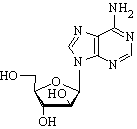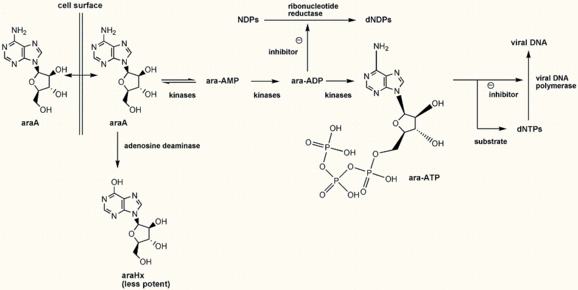The Centers for Disease Control and Prevention (CDC) has issued guidelines for diagnosing and treating adverse reactions to smallpox vaccination in the preoutbreak setting. The information is available online at: www.cdc.gov/ mmwr/preview/mmwrhtml/rr5204a1.htm.
Smallpox vaccine is made from live vaccinia virus but does not contain variola virus, which causes smallpox. Different vaccinia strains have been used worldwide to produce smallpox vaccine, but all formulations manufactured in the United States contain the New York City Board of Health vaccinia strain, which has been reported to cause fewer adverse events than other strains.
Contraindications
In the preoutbreak setting, smallpox vaccination is contraindicated for persons who have or are in close contact with someone who has the following conditions:
* A history of atopic dermatitis (eczema), regardless of severity or activity;
* Active acute, chronic, or exfoliative skin conditions;
* Pregnant women or women who may become pregnant in the 28 days after vaccination;
* Persons who are immunocompromised because of human immunodeficiency virus, acquired immunodeficiency syndrome, autoimmune disorders, cancer, radiation treatment, immunosuppressive medications, or other immunodeficiencies.
Additional contraindications that apply to the potential vaccinee, but not people with whom they are in close contact, include:
* Persons with allergies to smallpox vaccine components;
* Women who are breastfeeding;
* Persons taking topical ocular steroid medications;
* Persons with moderate to severe illness;
* Persons younger than 18 years.
A history of Darier's disease is a contraindication in a potential vaccinee and a contraindication if a person in the potential vaccinee's household has active disease. In the event of a smallpox outbreak, the CDC will issue outbreak-specific guidance about populations to be vaccinated and specific contraindications to vaccination.
Adverse Reactions and Treatment
A range of reactions, from mild to life-threatening, can occur after vaccination (see accompanying table). Some are similar to those caused by other vaccines (e.g., high fever, anaphylaxis, erythema multiforme). Reactions specific to smallpox vaccine include inadvertent inoculation, ocular vaccinia, generalized vaccinia, progressive vaccinia, eczema vaccinatum, postvaccinial encephalopathy (PVE), postvaccinial encephalomyelitis (PVEM), and fetal vaccinia. Normal reactions that do not require specific treatment include fatigue, headache, myalgia, regional lymphadenopathy, lymphangitis, pruritus, and edema at the inoculation site, as well as satellite lesions, which are benign, secondary lesions proximal to the central vaccination lesions. In a recent trial, about one third of vaccinees became ill enough to have trouble sleeping or to miss work, school, or recreational activities.
Treatments available for specific complications of smallpox vaccination include vaccinia immune globulin (VIG), cidofovir, and ophthalmic antiviral agents. None of these therapies has been tested in controlled clinical trials for efficacy against vaccinal infection. However, VIG is considered first-line therapy.
BACTERIAL INFECTIONS AND ROBUST TAKES
Large vaccination reactions (i.e., larger than 10 cm in diameter, also called robust takes) at the inoculation site occur in approximately 10 percent of first-time vaccinees. Robust takes can be difficult to differentiate from bacterial cellulitis. They occur eight to 10 days after vaccination, improve within 72 hours of peak symptoms, and do not progress clinically. In contrast, secondary bacterial infections typically occur within five days of inoculation or more than 30 days after inoculation and will progress if not treated. The interval to the onset of peak symptoms is the key factor in diagnosing robust takes. Fever is not helpful in distinguishing them from bacterial cellulitis because it is an expected immunologic response to vaccination.
Bacterial infection of the vaccination site is uncommon but affects children more often than adults, because children are more likely to touch and contaminate their vaccination sites. Specimens for bacterial cultures can be obtained with swabs or aspiration. Gram stains can detect normal skin flora and are useful only when unusual pathogens are present.
When a robust take is suspected, management includes observation, patient education, and supportive care that includes resting the affected limb and using oral nonaspirin analgesic medications and oral antipruritic agents. Salves, creams, or ointments, including topical steroids and antibacterial medications, should not be applied to the inoculation site.
INADVERTENT INOCULATION
Vaccinia can be transmitted through close contact from an unhealed inoculation site to other persons and can lead to the same adverse reactions as in the vaccinee. No data indicate that vaccinia can be transmitted by aerosolization. Uncomplicated, inadvertent inoculation lesions are self-limited, resolving in approximately three weeks, and require no therapy. Inoculations of the eye and eyelid account for the majority of inadvertent inoculations and require evaluation by an ophthalmologist.
Vaccinees should be instructed to avoid touching or scratching the inoculation site until the scab separates. Proper hand hygiene prevents most inadvertent inoculations and contact transmissions. Used bandages should be sealed in plastic bags before being disposed of in household trash.
OCULAR VACCINIA
Suspected ocular vaccinial infections should be managed in consultation with an ophthalmologist to ensure a thorough and accurate eye evaluation, including a slit-lamp examination, and the specialized expertise needed to manage potentially vision-threatening disease.
Off-label use of topical ophthalmic trifluridine or vidarabine can be considered for treatment of vaccinia infection of the conjunctiva or cornea. If vaccinia lesions are present on the eyelid, prophylactic therapy with these drugs might be considered to prevent spread to the conjunctiva or cornea. The potential benefits should be balanced against the minimal but potential risk of drug toxicity and of introducing the virus into the eye by frequent manipulation.
VIG should be considered for use in severe ocular disease when keratitis is not present. If keratitis is present, the potential benefits should be weighed against evidence for increased risk of corneal scar formation. VIG can be considered if the ocular disease is severe enough to pose a substantial risk of impaired vision. If VIG is administered specifically to treat ocular disease in the presence of keratitis, treatment should be limited to one dose, and the patient should be informed of the possible risks and benefits before use. Using VIG to treat other vaccinia disease (e.g., eczema vaccinatum) is indicated even in the presence of keratitis. VIG is not recommended for treating isolated keratitis.
Topical ophthalmic antibacterial medications should be considered for prophylaxis of bacterial infection in the presence of keratitis. In severe cases of keratitis (e.g., with an ulcer and stromal haze or infiltrate) and iritis, topical steroids should be considered after the corneal epithelium is healed to decrease immune reaction; mydriatics also are indicated.
GENERALIZED VACCINIA
Generalized vaccinia is characterized by a disseminated maculopapular or vesicular rash, frequently on an erythematous base, that occurs six to nine days after inoculation. This condition frequently is self-limited and benign, although treatment might be required when the patient is systemically ill or immunocompromised. Generalized vaccinia rash might be preceded by a fever, but patients usually do not appear ill. The skin lesions are thought to be spread by the hematogenous route and might contain vaccinia virus. Contact precautions should be used when treating these patients.
PROGRESSIVE VACCINIA
Progressive vaccinia is a rare, severe, and often fatal complication in persons with immunodeficiencies. It is characterized by painless, progressive necrosis at the inoculation site, with or without metastases to distant sites. It should be suspected if the initial vaccination lesion continues to progress without apparent healing by 15 days postvaccination. Management of progressive vaccinia should include aggressive therapy with VIG, intensive monitoring, and tertiary-level supportive care.
ECZEMA VACCINATUM
Eczema vaccinatum occurs among persons with a history of atopic dermatitis. It is a localized or generalized papular, vesicular, or pustular rash that can occur anywhere on the body, with a predilection for areas of previous atopic dermatitis lesions. It often is accompanied by fever and lymphadenopathy. Onset of the characteristic lesions can be noted concurrently with or shortly after the development of the local vaccinial lesions. Patients with eczema vaccinatum often are systemically ill and usually require therapy with VIG. Management includes hemodynamic support (i.e., as for sepsis) and meticulous skin care (i.e., as for burn victims). Patients might require volume repletion and vigilant monitoring of electrolytes as a result of the disruption of the dermal barrier. Patients with this reaction are at risk for secondary bacterial and fungal infections of the lesions, and antibacterial and antifungal agents are indicated as necessary.
POSTVACCINIAL CENTRAL NERVOUS SYSTEM DISEASE
Postvaccinial central nervous system disease, which includes PVE and PVEM, is most common among infants younger than 12 months and is a diagnosis of exclusion. Clinical symptoms reflect cerebral or cerebellar dysfunction with headache, fever, vomiting, altered mental status, lethargy, seizures, and coma. Lumbar puncture can reveal an increased opening cerebral spinal fluid (CSF) pressure, and examination of CSF might indicate monocytosis, lymphocytosis, and elevated CSF protein. PVE and PVEM are not thought to be a result of replicating vaccinia virus. No specific therapy is available for PVE or PVEM, but supportive care, anticonvulsants, and intensive care might be required.
FETAL VACCINIA
Fetal vaccinia, resulting from vaccinial transmission from mother to fetus, is a rare but serious complication of smallpox vaccination during pregnancy or shortly before conception. It is characterized by skin lesions and organ involvement and often results in fetal or neonatal death. No known reliable intrauterine diagnostic test is available to confirm fetal infection. There is no known indication for routine, prophylactic use of VIG in an unintentionally vaccinated pregnant woman. However, VIG should not be withheld if a pregnant woman develops a condition where VIG is indicated.
OTHER VACCINE-SPECIFIC ADVERSE EVENTS
Less frequently reported adverse events associated with smallpox vaccination include myocarditis, pericarditis, precipitation of erythema nodosum leprosum or neuritis among patients with leprosy, and osteomyelitis. Reported skin changes at the vaccination scar have included malignant tumors (e.g., melanoma, discoid lupus, and localized myxedema as a symptom of Graves' disease). Reported neurologic complications include transverse myelitis, seizures, paralysis, polyneuritis, and brachial neuritis.
Revaccination of Persons with History of Adverse Reactions
Persons with a history of adverse reactions to smallpox vaccination that leads to deferral should not knowingly be placed in a situation where they might be exposed to smallpox. No absolute contraindications exist about vaccination of persons with high-risk exposures to smallpox; persons at greatest risk for experiencing serious vaccination complications also are at greatest risk for death from smallpox. In this situation, the benefits of vaccination probably outweigh the risks of an adverse reaction.
COPYRIGHT 2003 American Academy of Family Physicians
COPYRIGHT 2003 Gale Group



